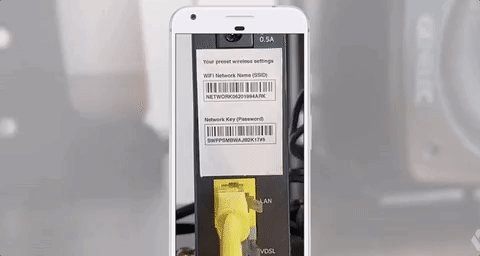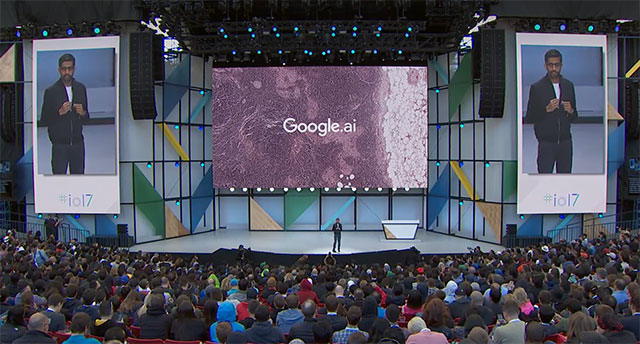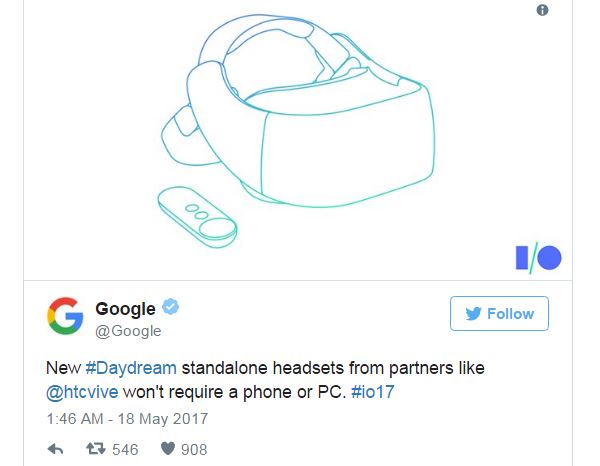10 key points at Google I / O 2017
Like Microsoft Build and Apple WWDC, Google I / O is one of three annual events for developers interested. During the event just held last night, CEO Sunder Pichai introduced a roadmap for products to be released in the near future. Instead of promises, this year's I / O reveals information about what the company will do (and want to do) in the future. Here are 10 notable points.
Android has a milestone of 2 billion monthly devices
Android is dominating the mobile market and there is no sign of stopping development. Sundar Pichai CEO opened the conference with information on the monthly operating Android device has now surpassed the 2 billion mark. These devices include phones, tablets, Android Wear, Android TV and other devices based on Android.
Google Assistant can see and understand the world around
Google Assistant can now analyze the world around users with the help of phone cameras. By technology called Google Lens, Assistant will analyze the surrounding environment and display relevant content on the screen . You will see the restaurant's rating when you put the phone in front of the restaurant, toward the flower to determine the price or even find the music / video of a music by putting Lens on the poster of the show. This is the most useful example: When putting Lens in front of Wi-Fi login information, the Android device can use that information to log in to the Wi-Fi network automatically.

Google Assistant brings many improvements
Google is not the first company to bring AI in conjunction with phone cameras. Samsung has just launched Bixby Vision on Galaxy S8, the version of Bixby virtual assistant that uses vision. Snapchat (and Instagram) also use AI to apply filters to images. But Google products are much more than just recognizing images, shopping or using filters.
Google Assistant will be available on iPhone
Assistant is reaching farther, from Android to iOS. Google Assistant will be a standalone application on iPhone and iPad, bringing similar functionality when used on Google's operating system. If you're using iOS, you won't have to wait long.

Mr. Pichai at Google I / O 2017
Google Home turns into a phone
Like Amazon, Google is turning smart speakers into phones . In the next few months, those who use Home will be able to make free calls to the US and Canada. By default, Google will use its own number to make a call, but you can also type in your mobile number. Home also supports setting up multiple users. To avoid privacy issues, Google currently only applies to outgoing calls.
Google Home will become more useful
Google's smart speaker is now one of the best on the market, and the company has also announced it will include new update features, in addition to calling features. Home will now be able to control HBO Now, Hulu, SoundCloud, Deezer . More than that, Google will also provide access to Home's Bluetooth radio, which means you can use it as a Bluetooth speaker .
Home is gradually becoming a useful device. Google introduced a feature called "visual feedback". Using Google Assistant, Home can now navigate and select the right information for the right connection screen . For example, when you say "Show calendar today", Home will immediately show up on the TV screen connecting Chromecast. If you ask the route to a specific place, it will give instructions to the Google Maps application on the phone.
More than ever, this requires you to use Google's products and services, but anyway, it will certainly incorporate all of its products in a way that you won't need to think about buying. Amazon Echo too.
Google Photos adds unlimited books and sharing features
Google Photos has some new features. The application will suggest you share the image with the person it recognizes in the picture, called Suggested Sharing feature . In addition, the company also introduced Shared Libraries, allowing people to easily add images to a common collection. The company also emphasized that you can share the entire gallery of images, share photos from a specific date or share photos that contain certain content (such as children, flowers .)
Digital storage is also good, but what if you want to keep it in the form of an object? Google also now offers printed photo books. Books created directly from the phone. Google also suggests related books based on your collection. The price of these books will be only from $ 9.99.
In the future, Google said Photos can also automatically delete unwanted images as below.

Standalone virtual reality application
Google's ambition is far ahead of the current Daydream virtual reality glasses. The company offers upcoming headset information from partners like HTC, Lenov . users will not need to have a mobile or PC, just put it on. The device will follow the virtual space Google calls WorldSense, supported by technology from the tangible augmented reality system.

First Android O Beta version
Google released the Preview for Android O, the first Beta to be released today. It is still very early so do not rush to install it now. But if you want to see how these new features, like picture-in-picture features, notifications . then you can use a compatible Pixel or Nexus device to try.
Android Go will be the way Google touches the next billion users
Since becoming CEO of Google since 2015, bringing the next 1 billion users to smartphones is still his central goal. Today, the company announced a way to achieve this goal: Android Go is a version of the mobile operating system but built for entry-level devices by optimizing for use in data environments. limited.
Android Go, built on Android O, will come with rebuilt Google apps, requiring less memory, more space and more data. Android Go also has its own version on Google Play Store, as well as YouTube Go.This operating system can run on low-cost smartphones with RAM of only 512MB or less . Google also builds in such a way that carriers can tell users exactly how much data they have used. Android Go is still an internal project but Google seems quite confident about the ability to achieve the position that Android One made in 2014.
New AI chip turns the cloud into Android
Pichai emphasizes its future depending on AI, especially the machine learning technique that allows algorithms to self-study and improve over time. This technology is present everywhere, from Assistant, search to Google Photos or AlphaGo. At I / O, Mr. Pichai announced the next generation of Tensor Processing Unit, a chip specifically designed for machine learning and working on its TensorFlow platform.
This new TPU chip will help build AI on Google's platform faster and more efficiently than using hardware and machine learning platforms of rival companies. Using a combination of TPU and TensorFlow, Google will turn its cloud computing platform into an Android for AI.
You should read it
- Will Google Drive back up photos and videos instead of Google+?
- Being fined 5 billion USD by EU, Google threatened to charge Android
- The prediction of Android's name 9.0 follows Google's spring wallpaper set
- Instructions to install Google Photos for computers
- Review of 2017 by Google
- 22 tips to help you master Google Photos
 See when Google brings Android and virtual assistants to what cars will look like
See when Google brings Android and virtual assistants to what cars will look like Download the latest Joomla version to fix a serious SQL Injection vulnerability
Download the latest Joomla version to fix a serious SQL Injection vulnerability 5 reasons why Windows 10 S lags far behind Chrome OS
5 reasons why Windows 10 S lags far behind Chrome OS Not only Netflix, other App Developers can also block Android from being rooted to download applications
Not only Netflix, other App Developers can also block Android from being rooted to download applications Microsoft released a completely renewed version of OneNote for the iPhone
Microsoft released a completely renewed version of OneNote for the iPhone Now it is possible to hack Windows with Google Chrome
Now it is possible to hack Windows with Google Chrome